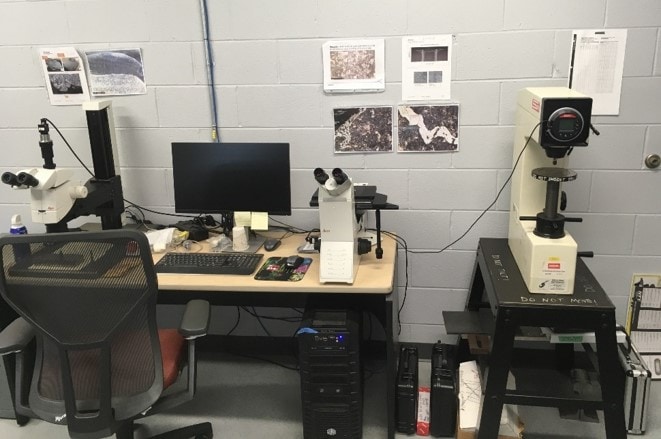Employee Spotlight: Nicholas Martino Featured in Technical Paper
March 27, 2023
Holland is a force in the industry when it comes to flash-butt welding. However, what really drives that force is the people behind what makes our technology stand apart among the competition. Nicholas Martino, Director of Weld Quality, Research and Testing, is one of those people! We’re so proud to feature a recent technical paper co-written by Nicholas titled “Electric Flash Butt Rail Weld Failure Called ‘Concave-Convex'”.

Nicholas graduated from Marquette University with a Bachelor of Science in Mechanical Engineering and has worked with us at Holland since 2011. Starting as a Welding and Design Engineer, he’s worked his way to overseeing Holland’s Weld Quality lab.
Our headquarters in Crete, IL is home to a one-of-a-kind weld quality lab. We are consistently analyzing, testing, and verifying our welds to ensure that our customers receive the highest quality weld that give their railways new life.

We could not be prouder of Nicholas for sharing his knowledge of flash-butt welding with the industry. Read the abstract below or download the full publication via the link below:
https://link.springer.com/article/10.1007/s13632-022-00912-4
Abstract:
Sporadically, electric flash butt (EFB) rail welds fracture vertically through the cross section of the rail. A particular type of vertical transverse weld failure exhibits a protruding and recessed area in the center of the web and coincides with the maximum centerline segregation within a given rail. This failure will herein be called “concave–convex.” The failures initiate in the web near the middle of the cross section of the rail where iron carbide networks, also called grain boundary cementite (GBC), were found. Hard and brittle iron carbide networks create stress concentrations and, in general, the weld fails prematurely, sometimes as early as the first train that passes over it. There have been numerous discussions and different opinions within the rail industry regarding whether this type of weld failure is due to the EFB weld process, or if the iron carbide networks were present in the as-rolled rail, or a combination of both. In this study, using metallographic methods, the authors showed that iron carbide networks, which caused the failure were, in fact, present in the as-rolled rail, specifically the rail with the post-fracture concavity.
